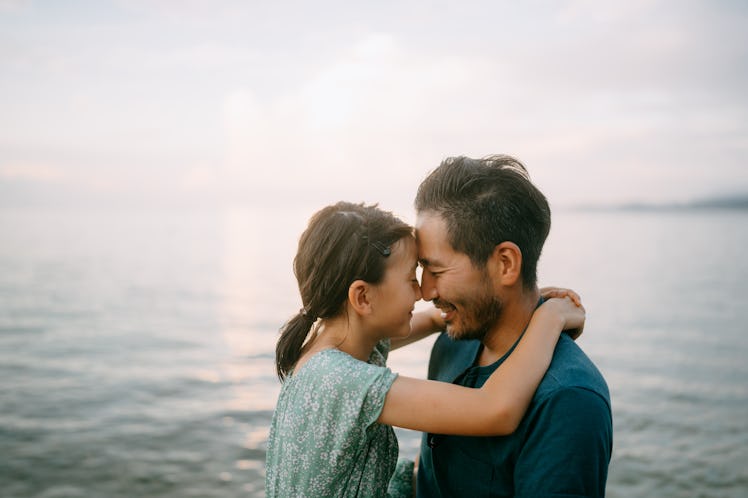How To Teach A Kid To Say Thank You
Parents who want a kid to say thank you and mean it, need to say it themselves and mean it.

Parents say “please” is the magic word, but often fail to stress the importance of “thank you,” which arguably communicates an even more powerful sentiment. “Thank you” doesn’t just communicate a willingness/eagerness to be polite, but a genuine appreciation of work done. On a practical level, those who don’t express gratitude often end up having less to be grateful for–an ignominious fate that can be avoided with some helpful guidance.
“Gratitude is important and I think that’s something we sometimes forget about,” says Dr. Mayra Mendez, program coordinator for intellectual and developmental disabilities and mental health services at Providence Saint John’s Child and Family Development Center. “And we forget to teach our kids it’s important to say thank you out of gratitude.”
One of the reasons that “thank you” is taught less than please is that “thank you” is harder to teach. After all, by the time it’s appropriate, the kid already has the thing the kid wanted. Still, kids can be taught to say the magic words by hounding them (not recommended) or (recommended) by teaching them to want to say it.
The trick, according to Mendez, is in teaching a child that there’s value in gratitude—that it has an ethical and empathetic weight that means just as much as please. “Sometimes parents think it might be demoralizing or that kids don’t need to be saying ‘thank you’ all the time,” she says. “But even the simplest things merit a simple ‘thank you.’ Saying it doesn’t make you subservient.”
Parents who don’t believe this to be true (know this to be true, really), can’t pass along the lesson. So it’s best for dad and mom to start with dad and mom. Parents can thank each other and other parents and people in bodegas and people at K-Mart. Doesn’t matter. More the merrier. Gratitude never killed anyone.
What’s harder for many parents, and what truly drives the value home, is when parents say thank you to their kid. That can be a big ask. Some parents feel that when a child is asked to do something they should just do it out of obligation to parental authority, no questions asked. That’s particularly true in the case of chores. That might be true, but that doesn’t mean that a ‘thank you’ isn’t warranted. Mendez notes that a casual ‘thank you is just fine during chores, particularly if a parent is praising a job well done to reinforce that behavior. After all, a kid might be required to do a chore, but doing it well requires a bit extra. Being grateful for that effort makes complete sense. The trick is the specificity related to real effort from their child.
“Modeling is full circle,” Mendez answers. “You need to model it all the way around. The point is to not say it 24/7, but saying it with meaning and sincerity.”
While modeling is an implicit way to teach a kid the power of a thank you, there are also more implicit ways. For youngest, the teaching should include some serious play, according to Mendez. “With little ones you can roleplay with dolls or action figures and do some symbolic play where there’s a situation where gratitude merits expression,” she says.
However parents teach how to say thank you, Mendez points out that they need to do it. “Without the ability to say thank you comes, perhaps, the inability to recognize gratitude in others,” she says. “And if they can’t recognize that they’re grateful for something somebody else did, chances are the foundation for empathy is not there, limited or damaged.”
This article was originally published on